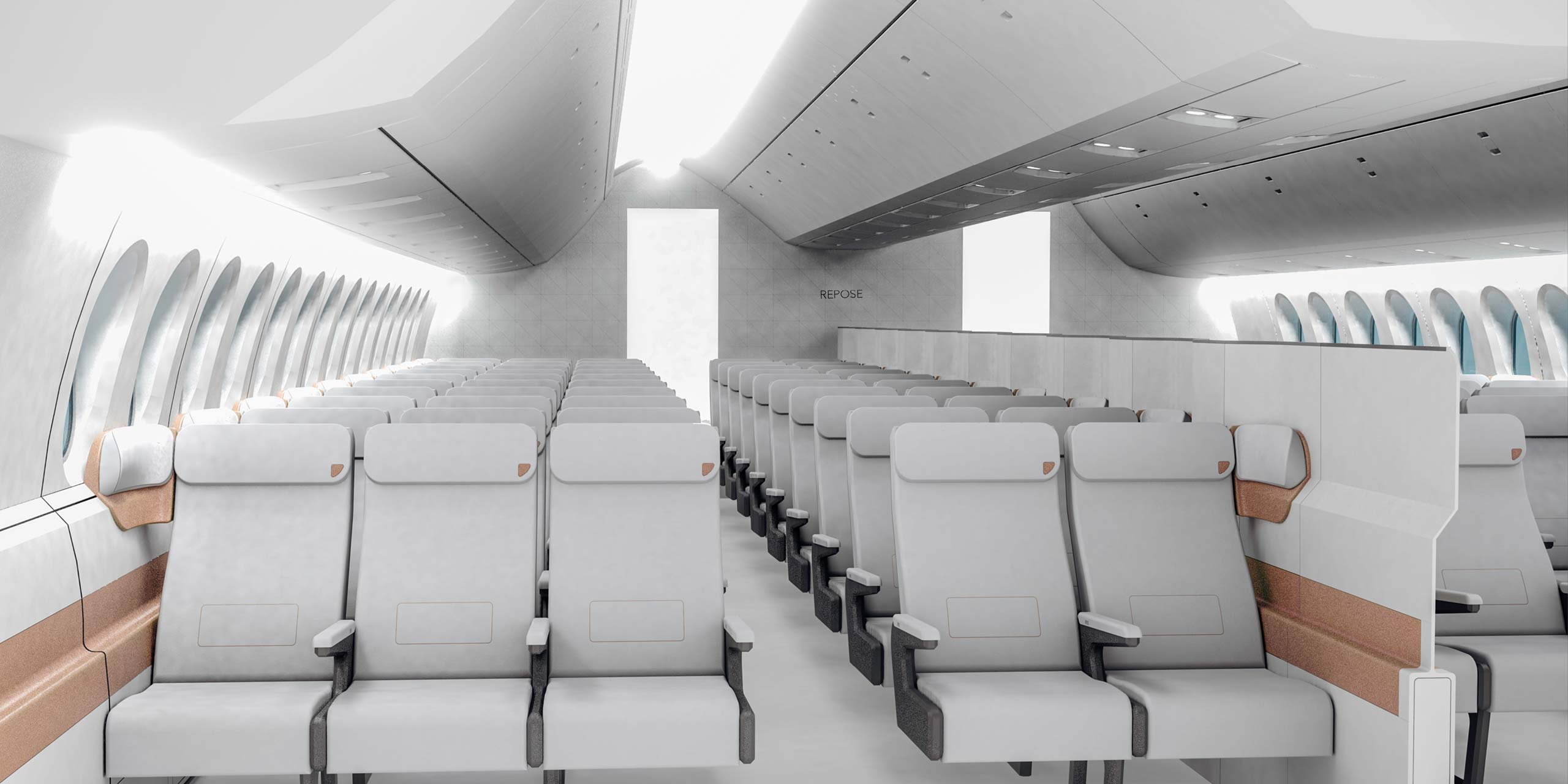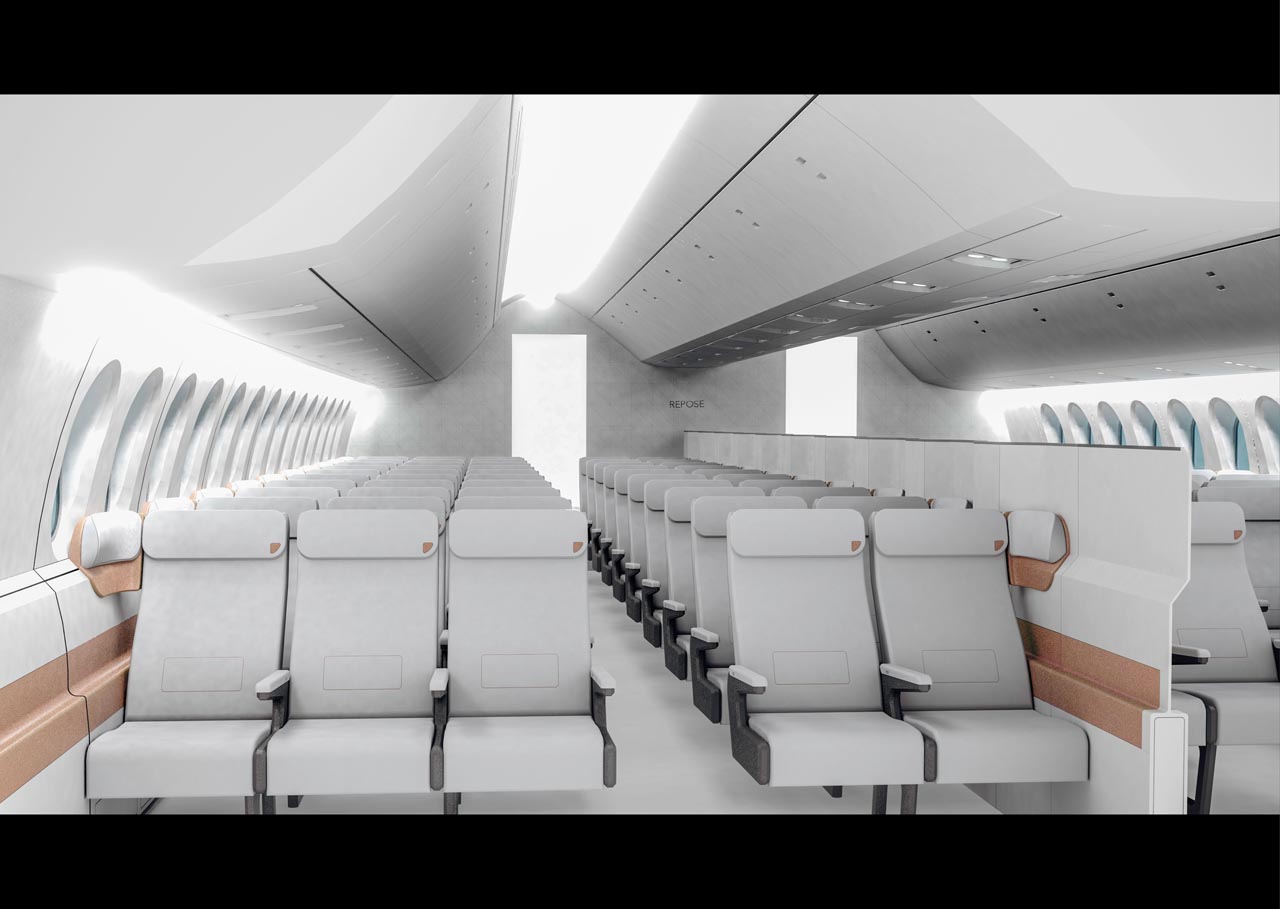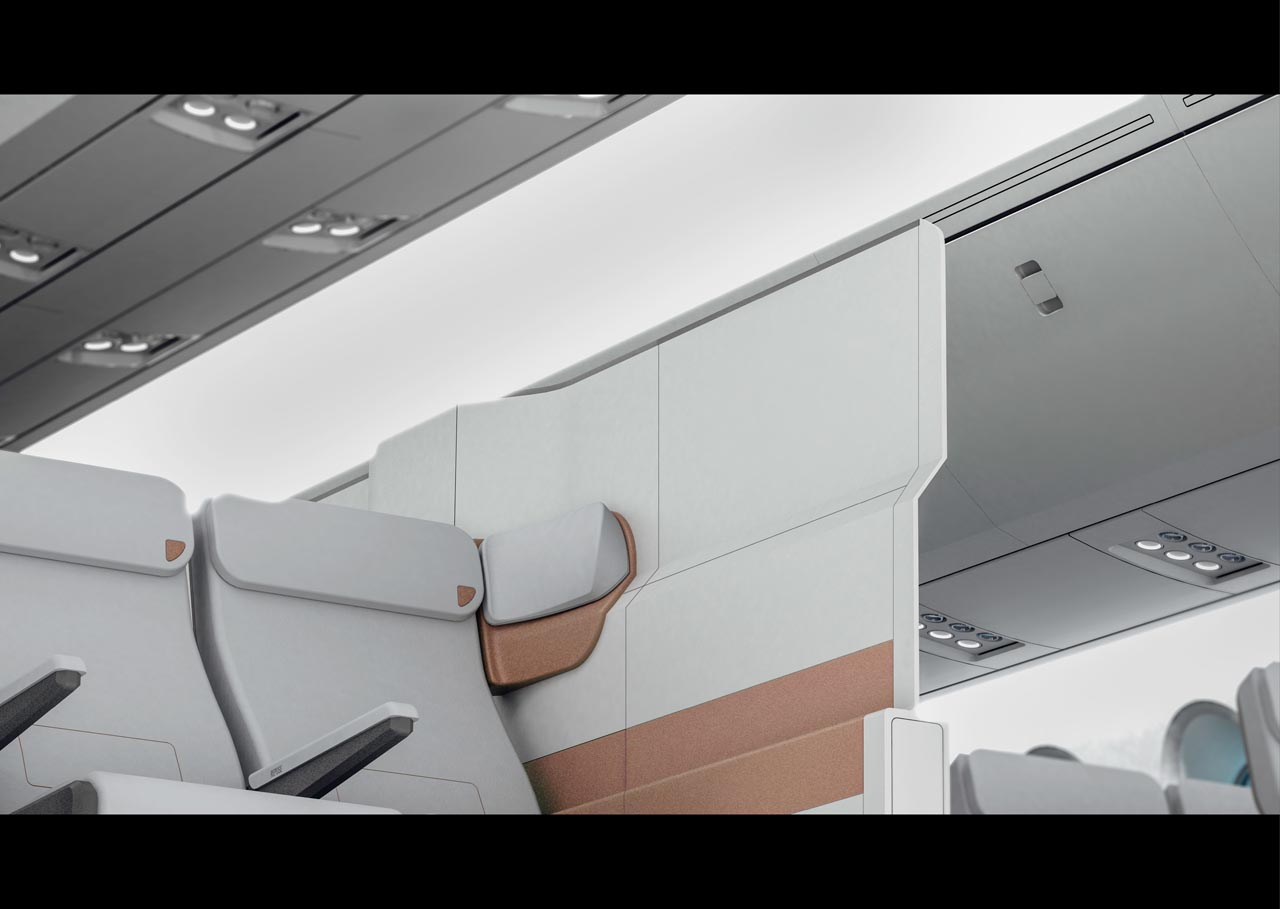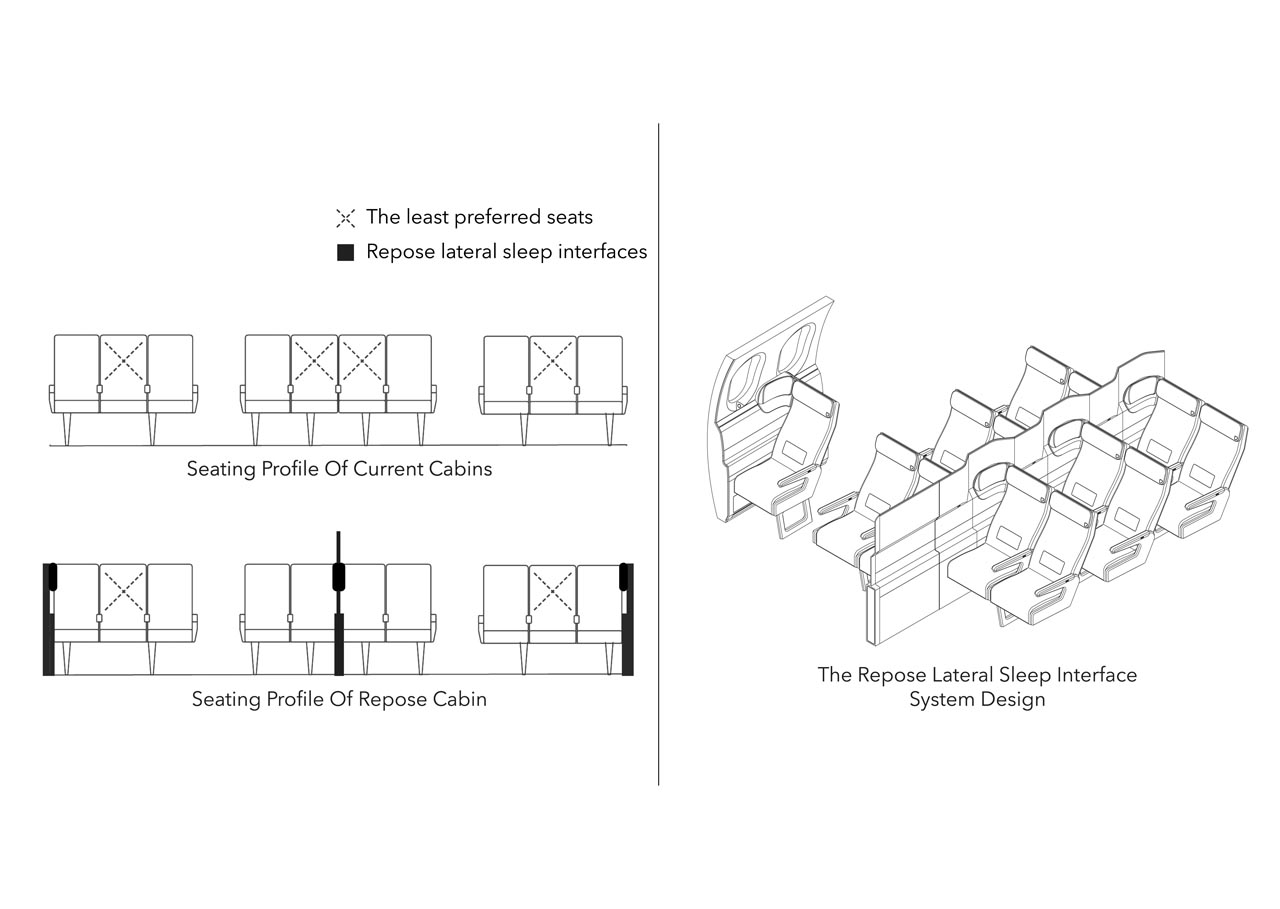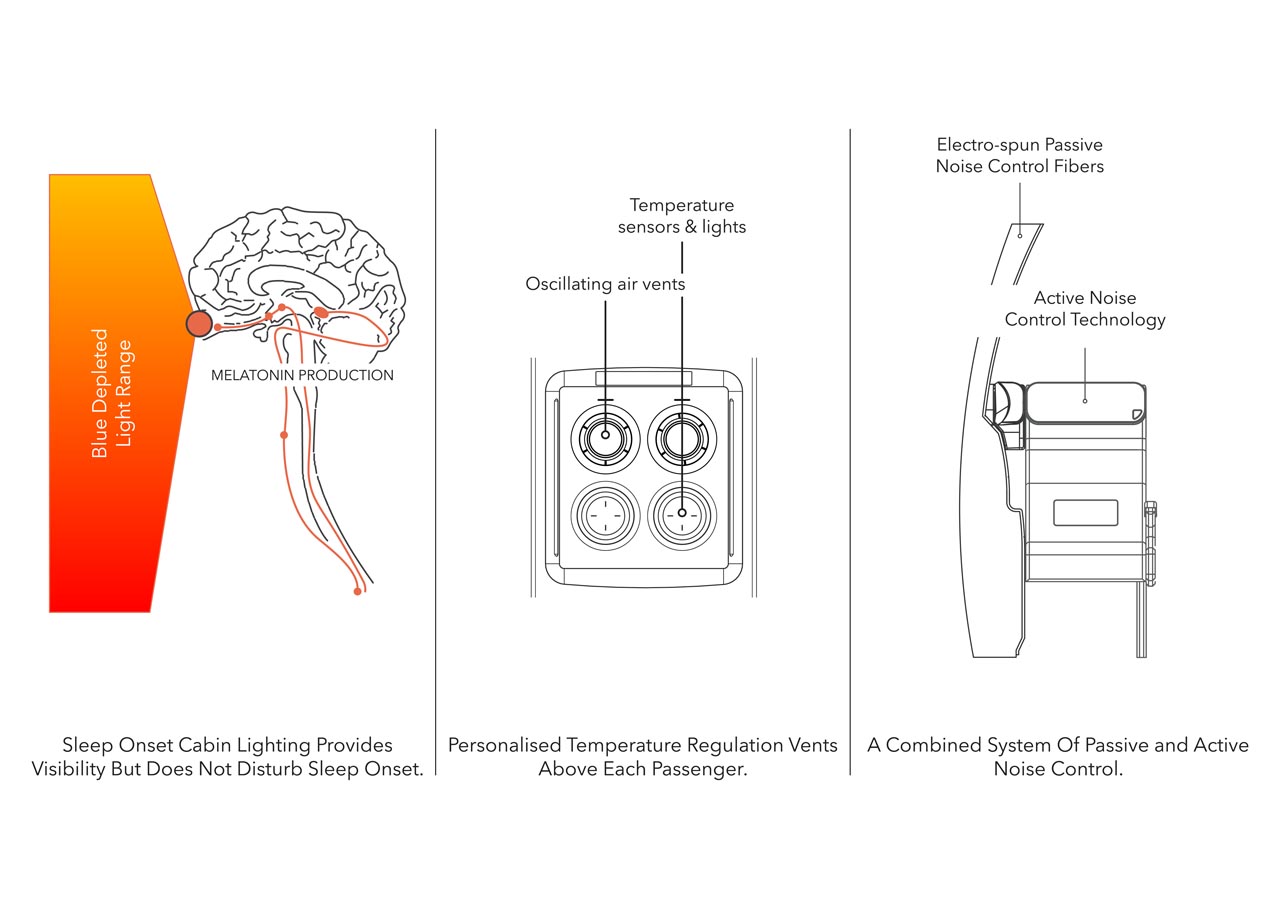Repose was scientifically informed and holistically considerate of passengers, aircraft manufacturers, airlines and regulatory authorities. Rapid iterations of prototypes in collaboration with industry and scientific partners led to grounded, straightforward and effective solution that is composed of;
- The Lateral sleep interfaces which provide side support to passengers sleeping in window and mid-cabin seats;
- Sleep onset cabin lighting that provides visibility but does not disturb sleep hormones;
- Personalised temperature regulation vents above each passenger;
- A combined system of passive and active noise control technologies; and
- A cabin design aesthetic language that is tuned for better sleep.

